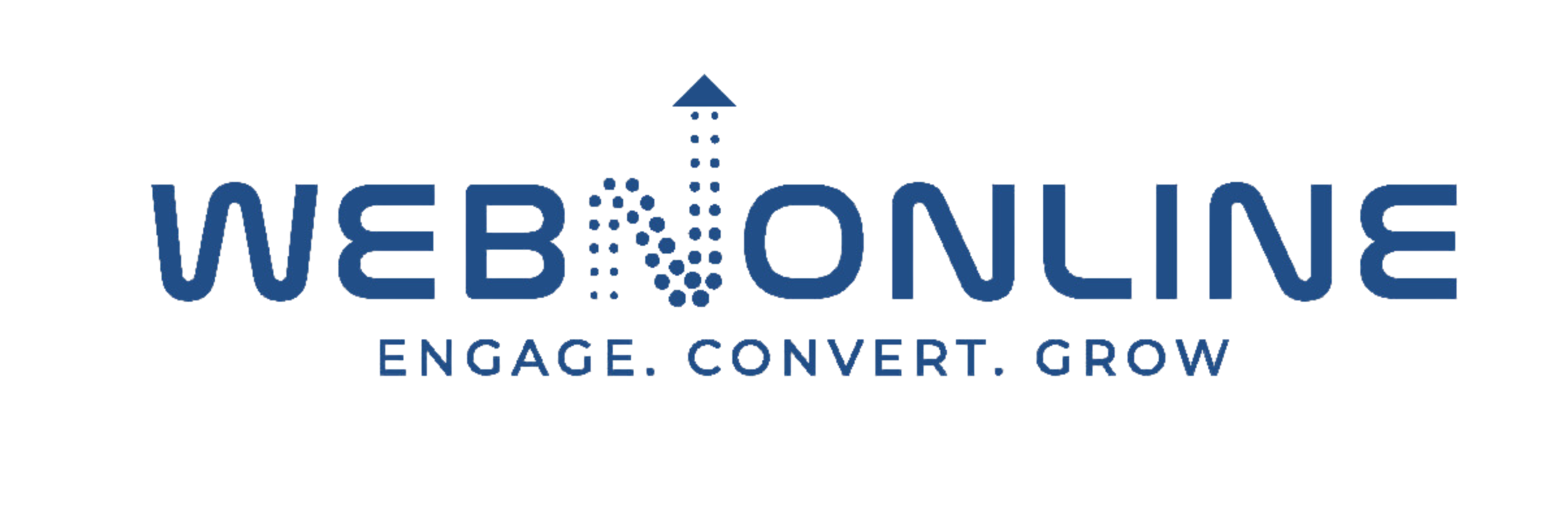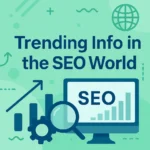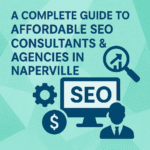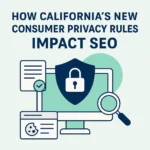
Introduction
In today’s digital age, around 70% of marketers actively invest in SEO. This is because SEO or Search Engine Optimization generates organic traffic at low costs. The conversion rates from organic traffic tend to be 15% higher than those from paid advertising. For businesses to grow and expand, the websites make your presence in the online world strong and profitable.
However, just like a store located in a forgotten corner, a website with the best content can go unnoticed if it doesn’t attract potential visitors. This is where Search Engine Optimization (SEO) makes all the difference!
Table of Contents
What is SEO
Search engines like Google, Microsoft Edge etc have millions of web pages. These search engines crawl and index the web pages to understand the content relevancy. The studies reveal that a staggering 95% of website traffic comes from search engines.
SEO is the process of improving and increasing your website’s visibility in these search engines whenever your target audience looks for products and services you offer.
- When a user searches for any query, the search engine uses its in-built algorithms to crawl through the indexed pages.
- It presents the most relevant results at the top of the Search Engine Results Page(SERP).
- You must note that the top result on search engine results page gets the highest percentage of clicks i.e. 31.3%. This number decreases as you move down on the page.
- Thus, SEO improves the overall ranking of your website and the higher your website ranks on the SERP, the more likely it is for your target audience to find you.
How does SEO work?
SEO is a long-term strategy. It generates organic traffic and offers a cost-effective source for lead generation and higher website rankings. It is a multifaceted strategy that has 3 core elements:
- On-Page Optimization
- Off-Page Optimization
- User Experience
Take a look at these elements in detail below:
What is On-Page SEO
On-page optimization involves the optimization of content and structure of your website’s individual pages to make them search engine friendly. This aspect makes your website visually appealing and informative. Here are some key on-page SEO strategies:
1- Keyword Research: Identifying relevant keywords and phrases that your target customers are likely to search for when seeking information related to your services or products. There are 2 main types of keywords to consider:
- Head Keywords: These are broad terms with high search volume and also high competition (eg: bakery). These keywords are great for brand awareness.
- Long-tail Keywords: These are specific phrases with lower search volume but also lower competition (eg: top bakeries near me). These are the best way for targeted traffic conversion.
2- High-Quality Content: Creating high-quality, informative, interesting and engaging content is must. On-page SEO focuses on creating content that answers users’ questions, solves their problems or just attracts them. This will naturally attract backlinks (links from other websites leading to yours)- a major SEO ranking factor.
3- Technical SEO: Your website must be mobile and user friendly. The fast-loading speed, clear and crawlable structure and well-organised content allows easy navigation and enhances user-experience.
While learning what is on-page SEO, you must remember these also:
- Mets Descriptions: For more clicks, compelling meta descriptions that appear below your website listing on SERPs are a major contributing factor.
- Image Optimization: Including relevant keywords in image alt tags and file names improve image search visibility.
- Internal Linking: To improve user navigation, linking relevant pages within your website creates strong internal linking pattern. It keeps the user engaged and within your website.
What is Off-Page Optimization
Off-page optimization focuses on building your website’s credibility and authority through external factors. Backlinks, as mentioned earlier are what off-page SEO prioritises. These high-quality websites that link back to yours make your website more trustworthy and relevant per the search engine algorithms.
Here’s how you get valuable backlinks:
- Guest Blogging: Contribute high-quality content to reputable websites in your niche. Include a link back to your website within the content.
- Broken Link Building: This includes finding broken links on relevant websites and suggest your content as a replacement.
- Social Media Engagement: Social media is a powerful tool that drives engagement. Actively participate on social media platforms to increase brand awareness and attract backlinks from others sharing your content.
What is User Experience(UX)?
Even in the digital age, the human element remains the topmost priority. SERPs prioritize websites that offer a positive user experience. While discussing about User Experience(UX), Technical SEO is what comes into picture. Now, you may want to know what is technical SEO, right?
This includes:
Having a clear and intuitive website design: The visual appeal and easy navigation enhances user experience and builds higher recall value.
- Fast loading times: Nobody likes a slow website. Optmizing your website’s speed by compressing images and using a reliable web hosting provider ensures faster loading.
- Mobile Responsiveness: Your website should work smoothly on all devices, especially smartphones and tablets.
- Schema Markup: These are data labels for your content. It improves search engine visibility and click through rates. It also provides more targeted search results and richer search results display.
The SEO Toolkit You must Know
There are several valuable tools that can help you achieve higher SEO results. Here are few of them:
- Keyword research tools: Google Keyword Planner, SEMrush, Ahrefs – help you identify relevant keywords and their search volume.
- Website analytics tools: Google Search Console, Hotjar – provide insights into your website traffic, user behavior, and keyword performance.
- Backlink checkers: Ahrefs, Moz – help you track your backlinks and identify link-building opportunities.
What is SEO in Digital Marketing?
Digital marketing is the process by which companies use digital platforms and technologies to advertise their brand, service, or product and eventually meet their marketing goals.
Businesses are realizing the importance of digital marketing as more and more customers use digital channels to look for services and products. Businesses can target particular markets, such as those based on demographics, track and analyze customer behavior, and increase brand visibility, revenue, and sales by utilizing digital marketing to reach a larger, more global audience.
These aspects are enhnaced by SEO in cost-effective ways. An essential component of any company’s digital marketing plan is search engine optimization, or SEO for generating organic traffic and more leads.
According to Statista, organic search generates 53% of website traffic globally. Here are few of the strategies includes in digital marketing:
- PPC (Pay-Per-Click) advertising
- SEM (Search Engine Marketing)
- Email-Marketing
Take a look at the difference between SEO and SEM:
Search Engine Optimization | Search Engine Marketing |
It is generally free, but requires time and effort. | It encompasses both SEO and PPC costs. |
The traffic source is organic search results | The traffic source is both paid and organic search results. |
Long-term strategy with gradual results | It is a combination of both short and long-term strategies. |
There’s limited control over search engine algorithms | It combines both controlled and organic reach. |
It is sustainable as the traffic continues even after efforts. | It can be sustainable but with ongoing or continuous SEO efforts. |
Now, that you know about SEO and SEM, you may ask how exactly PPC differs from these. Here’s how it differs:
- Pay-Per-Click is a paid advertising model that generates paid search results.
- It is a target-based way of getting leads and thus has high level of control over traffic source.
- It provides quicker results.
- Lead generation or traffic stops when the budget.
Common Myths About SEO
While reading more on what is SEO, how it works and elements of SEO, you must also learn the common myths regarding it. These are also some practices that nust be avoided:
1- SEO is a one-time fix
- SEO is an ongoing process. Search engine algorithms are constantly evolving, and so should your SEO strategy.
2- Keyword stuffing is the key to success
- Overusing keywords can actually hurt your rankings. Focus on creating natural and informative content.
3- Black-hat SEO tactics are a shortcut
- Techniques like cloaking (showing different content to users and search engines) can get your website penalized by search engines.
Benefits Of SEO
Unlike paid advertising, where traffic disappears as soon as your budget runs out, SEO creates organic traffic – visitors are genuinely interested in your content or services. This organic traffic is increased over time, making it a consistent and cost-effective drive to the website.
Here are some of the long-term benefits of SEO for your website:
1- Building brand awareness and trust
- Higher search rankings equate to greater online visibility for your site, which increases your site’s visibility to potential customers.
- This increased visibility translates into brand awareness and positions you as a thought leader in your niche.
2- Backlink Benefits
- Getting backlinks from popular websites shows the search engines that your content is credible and valuable, further increasing your website’s credibility and authority.
3- Higher Targeted Traffic
- SEO allows you to target your ideal audience through careful keyword research.
- By understanding the exact words and phrases that users associate with your offerings, you can tailor your content to attract the potential customers who are most likely to convert into clients
4- Nurture leads
- A well-designed website combined with high-quality content provides users with valuable content throughout their navigation.
- This allows you to educate, engage and nurture leads, ultimately driving conversion and sales.
The Takeaway
Investing in SEO may not yield immediate results, but it’s a beneficial decision that pays off in the long run. By optimizing your website for organic search, you attract more potential customers, build brand awareness, and ultimately achieve your business goals.
SEO is a continuous journey. Stay up-to-date with the latest trends, refine your style over time, and provide exceptional value for your target audience. By using the power of SEO, you can easily navigate the ever-changing digital times and ensure consistent business growth and profits.




